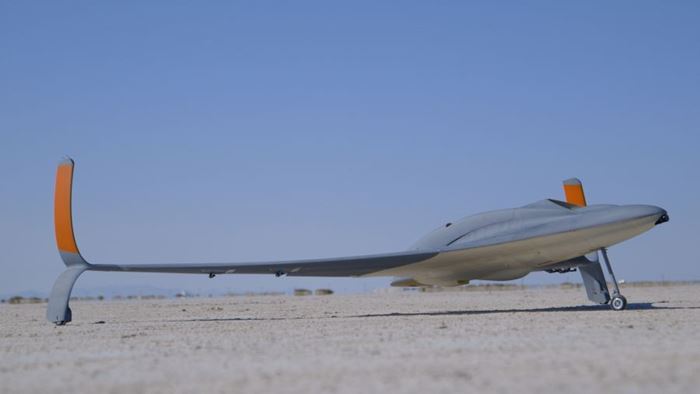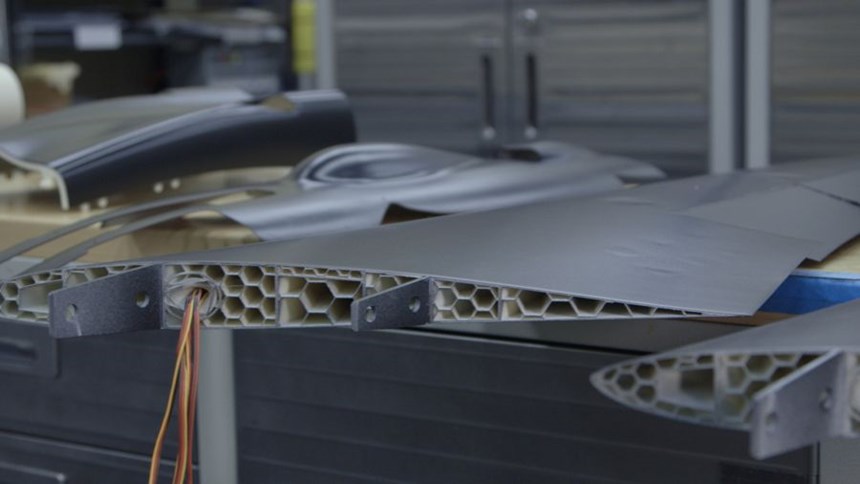UAV Takes Flight with 80 Percent 3D-Printed Parts
A collaborative project leveraged FDM and other additive technologies to design and build an unmanned aerial vehicle.
A joint project conducted by Stratasys and Aurora Flight Sciences has produced a jet-powered unmanned aerial vehicle (UAV) almost entirely via 3D printing. A primary goal of the project was to demonstrate how quickly the collaborators could move through designing and building a flight-capable UAV, but the results also serve as a proof of concept for the benefits of additive manufacturing in aerospace, where weight reduction is key. The finished aircraft, which features a 9-foot wingspan and weighs only 33 pounds, is 80 percent 3D-printed by weight. It is believed to be one of the largest and most complex 3D-printed UAVs ever produced, as well as one of the fastest, with a top speed faster than 150 mph.
The UAV’s light weight and speed are made possible by the materials and additive processes used to build it. Most of the aircraft was produced with Stratasys’ fused deposition modeling (FDM) process from ASA thermoplastic, which has good bridging properties meaning that less interior fill is necessary on hollow parts. The wings of the UAV, for example, were built via FDM with a honeycomb structure inside to provide strength (see the second photo above). Where FDM wasn’t possible, the project team incorporated other additive processes. The thrust vectoring exhaust nozzle, which must withstand extreme heat, was built from Inconel via direct metal laser sintering (DMLS), for example.
Watch the video below for more detail on the UAV’s development and to see it in action:
Related Content
-
Seurat: Speed Is How AM Competes Against Machining, Casting, Forging
“We don’t ask for DFAM first,” says CEO. A new Boston-area additive manufacturing factory will deliver high-volume metal part production at unit costs beating conventional processes.
-
What Does Additive Manufacturing Readiness Look Like?
The promise of distributed manufacturing is alluring, but to get there AM first needs to master scale production. GKN Additive’s Michigan facility illustrates what the journey might look like.
-
How AM Enables Cobot Automation for Thyssenkrupp Bilstein (Includes Video)
The shock absorber maker has responded to its staffing shortages through extensive use of collaborative robots. In-house 3D printing makes this possible by providing the related hardware needed to complete the cobot-automated cells.

.jpg;width=70;height=70;mode=crop)












